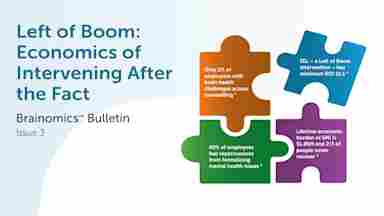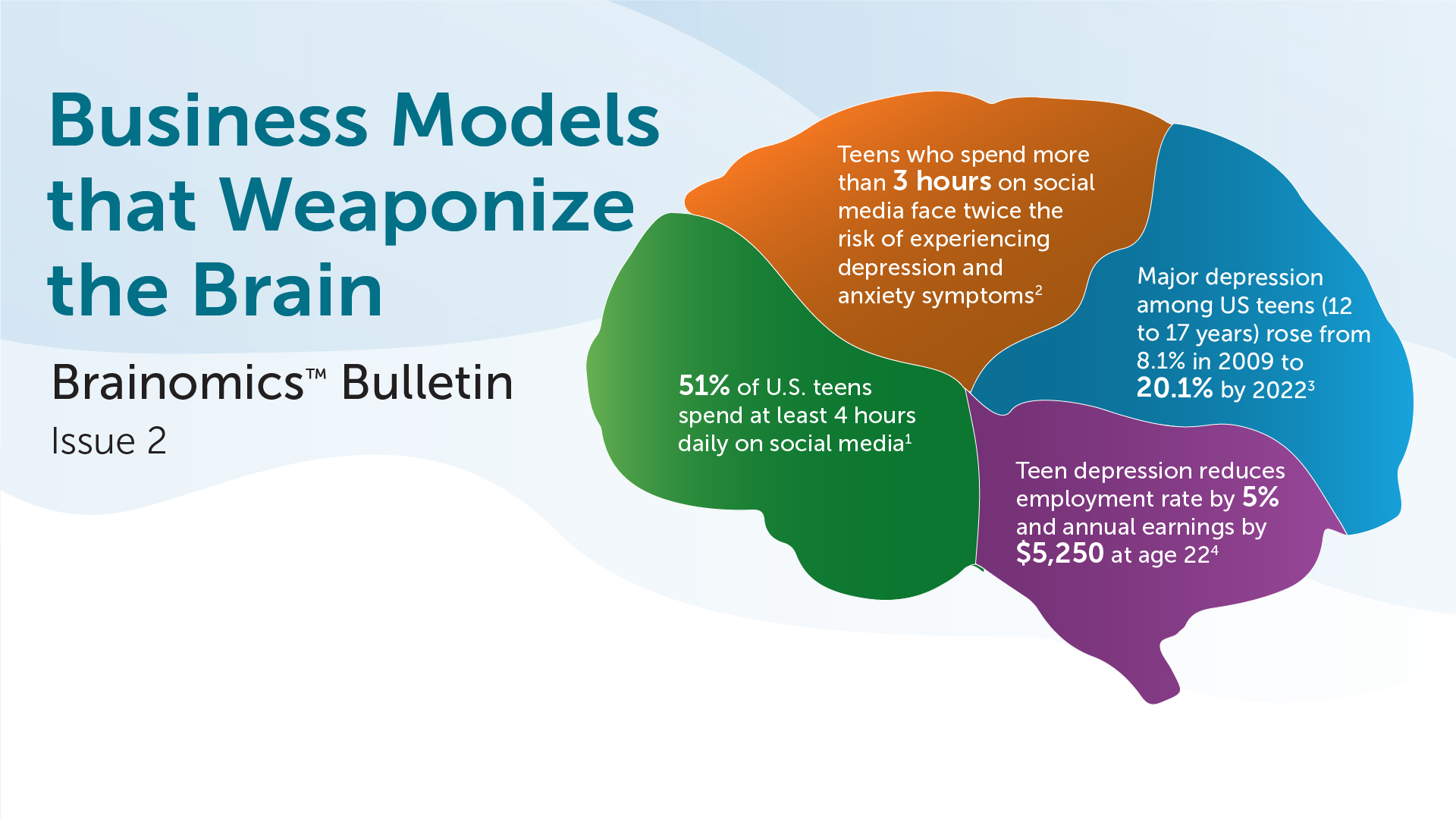Left of Boom: Economics of Intervening After the Fact
Brainomics Issue 3 Open Printable PDFConsider 2 strategies for addressing brain health in the workplace:
- Strategy 1: recognize we depend on the brain health of every employee, and everyone has a brain; teach our people how the brain functions and give every employee tools to assess and improve their own brain performance.
- Strategy 2: Provide a number to call when something goes wrong with their brain (like depression) and hope that (a) the employee calls, and (b) the intervention is effective.
“”

- Spill Team. (2024, January 26). Understanding the ROI for your employee assistance program
- Onque, R. (2022, September 13). 49% of workers fear repercussions for being open about their mental health at work. CNBC
- Seabury, et al. (2019). Measuring the lifetime costs of serious mental illness and the mitigating effects of educational attainment. Health Affairs, 38(4), 652-659.
- Arnett, A.A. (2017, April 11). For every $1 spent on SEL, there's a, $11 return. Higher Ed Dive




